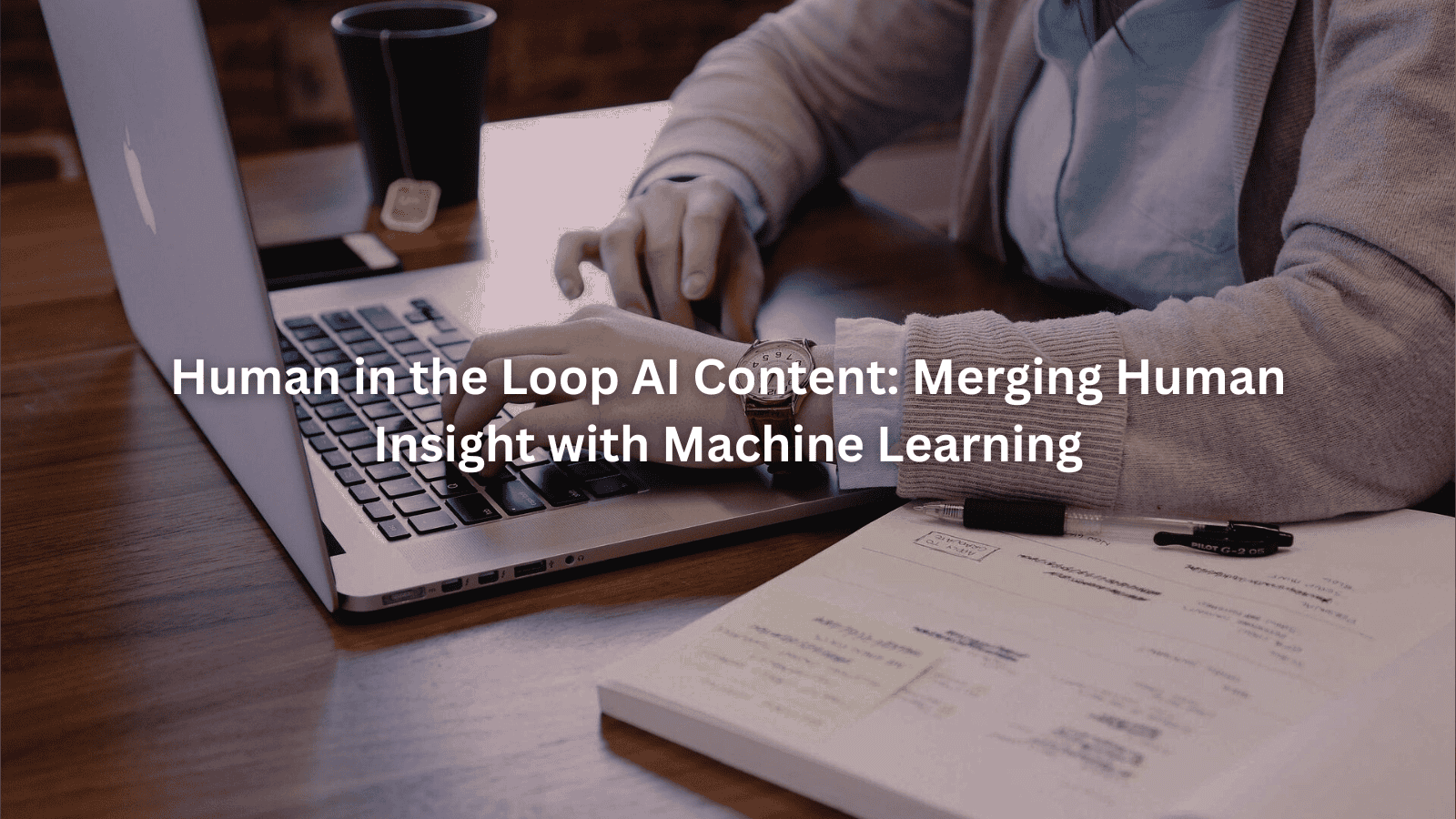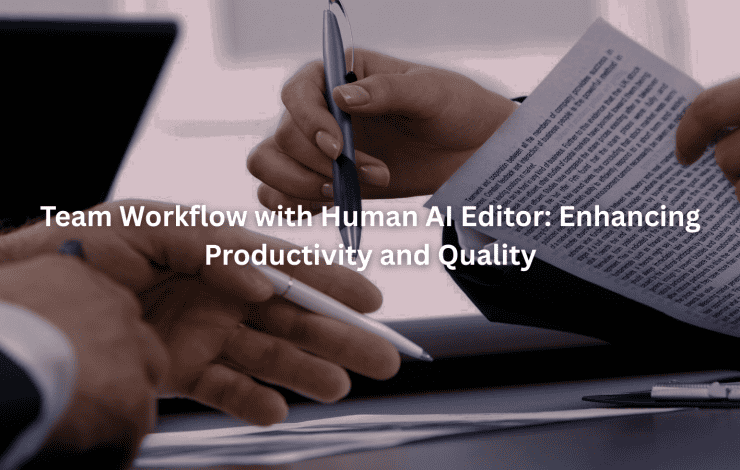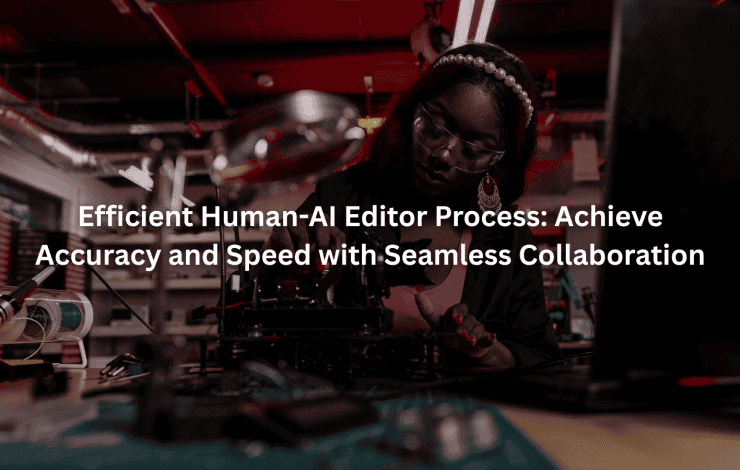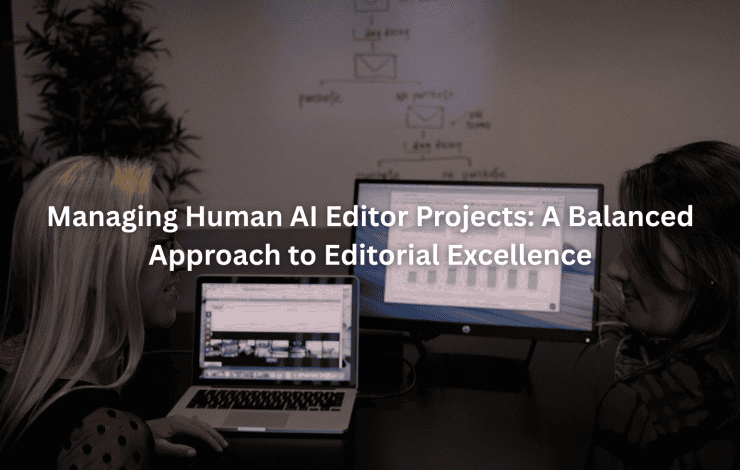AI’s pretty impressive these days, no doubt about it. But stick a human next to those fancy algorithms and something interesting happens. Like having a really smart intern who needs an experienced editor nearby, they’re quick, but they need guidance. Some companies figured this out the hard way, spending millions on AI systems that kept messing up until they put people back in charge.
Key Takeaway
- Someone’s gotta watch the machines (and know when to step in)
- Practice makes perfect AI gets better when humans give feedback
- Good data and quick human fixes keep things running smooth
Understanding Human-in-the-Loop AI Content
Definition and Core Principles
Look, working with AI isn’t rocket science. It’s more like teaching a really smart dog new tricks you’ve got to be there, pay attention, and step in when things get weird. And trust me, things get weird sometimes. Nobody’s letting these systems run wild anymore, not after some of the mess-ups we’ve seen.
The whole “human in the loop” thing sounds fancy, but it’s pretty simple: people and machines working together, each doing what they’re good at. Because let’s face it, AI’s still got a lot to learn about being, well, human.
Role of Human Oversight in AI Systems
Five years watching these systems work tells you something important, computers miss stuff. Big stuff sometimes. Like that time an AI thought a funeral photo would make great marketing material (yikes). Sure, machines are fast, but they don’t always get the subtle things that matter.
It’s kind of like having a smart but tone-deaf friend help write your wedding speech. They might nail the grammar, but miss the whole emotional part. That’s where understanding how to use a human AI editor effectively really makes a difference.
Iterative Feedback and Active Learning Cycle
This back and forth between people and machines actually works pretty well. At least when it’s done right. The AI does its thing, humans check it over, point out mistakes, and the system learns. Kind of like training a new employee, except this one never gets tired or asks for coffee breaks.
Implementation and Operational Workflow

Data Preparation and Annotation Techniques
First things first, you’ve got to give AI good stuff to work with. Garbage in, garbage out, right? Whether it’s cleaning mislabeled samples or curating reliable datasets, those corrections pay off.
In fact, a recent Nature study found that AI systems trained with human-reviewed data show measurable improvements in both accuracy and ethical alignment [ 1 ]. In fields like medical imaging and fraud detection, human input helped AI models avoid dangerous errors that would’ve gone unnoticed otherwise.
Training and Model Adjustment Processes
You can’t just set it and forget it. Systems evolve constantly, and maintaining that edge means prioritizing human-AI editor workflow integration as part of the tuning process. When something’s off, we fix it. When it’s working well, we try to figure out why.
Human Feedback and Real-Time Intervention
The best part? When something goes wrong, we’re right there to catch it. No waiting around for weekly reviews or monthly updates. See a problem? Fix it now. Because in this business, five minutes can be the difference between a small hiccup and a major headache.
Workflow Integration and Process Auditing
Getting HITL to work right takes planning. A lot of planning. Just like integrating human and AI editors into your workflow, every step needs careful oversight to avoid costly mistakes.
The team at Jet Digital Pro runs audits like clockwork, catching problems before they grow into disasters. And yeah, sometimes things slip through. But that’s exactly why having humans in the mix matters so much.
The whole point is making things flow. Smooth. Natural. People and machines working together, bouncing ideas back and forth until everything clicks. But it isn’t always pretty. Sometimes the feedback loop gets stuck, or someone misses something important. That’s just how it goes.
What matters is creating space where humans can step in whenever they need to, wherever they see something off. Because at the end of the day, it’s those human hunches, those gut feelings that make all the difference. Machines are smart, but they’re not wise. Not yet anyway.
Applications and Use Cases of HITL AI Content
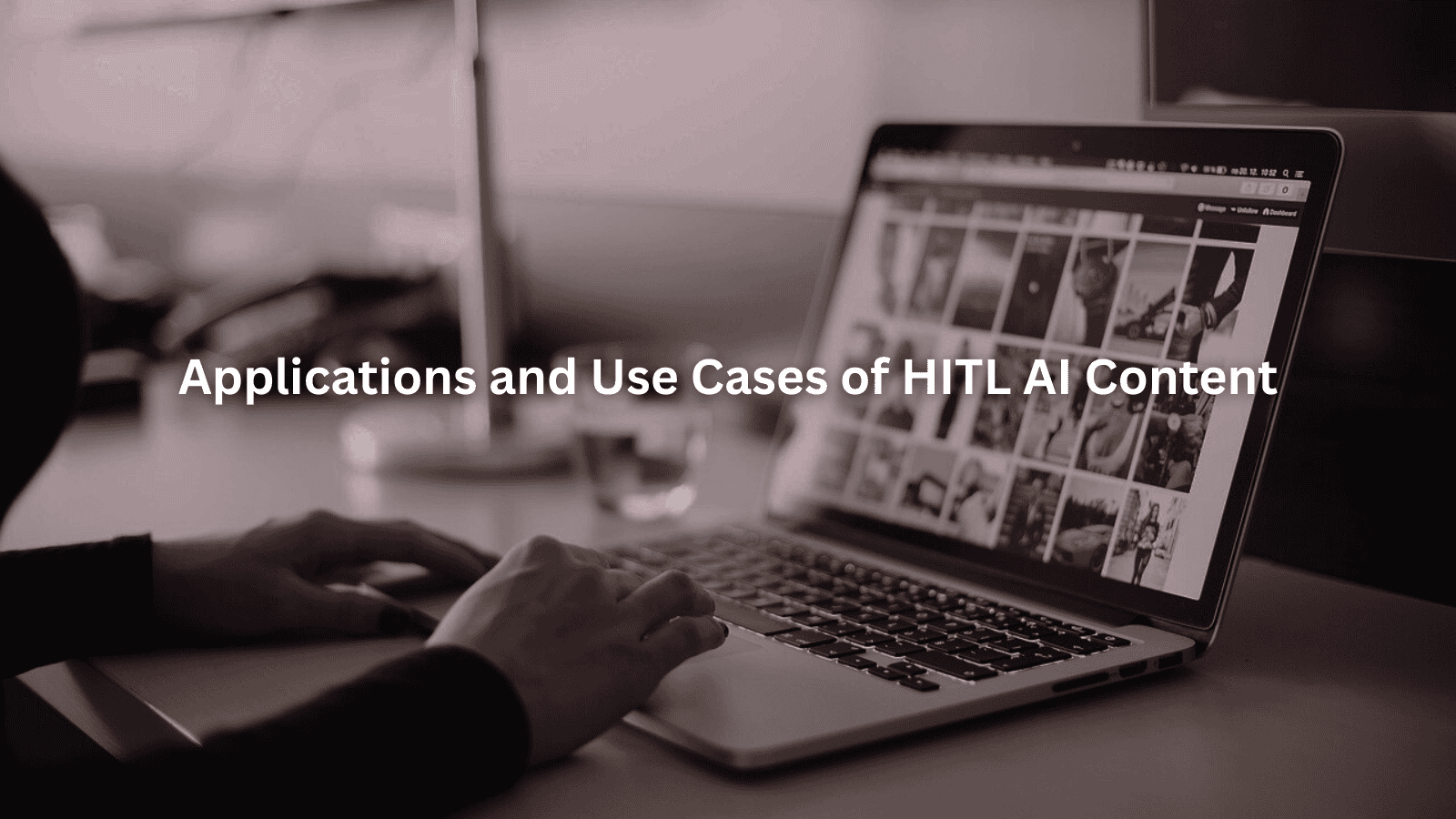
Content Moderation and Sentiment Checks
One of the most significant applications of HITL AI content is in content moderation. AI algorithms can quickly flag potential issues, but it’s the human moderators who make the final call. We’ve observed how this approach allows us to manage ambiguous judgments effectively.
Sentiment checks are another area where human oversight is golden. AI can analyze text, but understanding emotional nuances often requires a human touch.
By implementing these checks, we can:
- Maintain transparency
- Ensure our content meets regulatory compliance.
Natural Language Processing and Translation
In natural language processing (NLP) and translation, human experts are crucial. AI can generate translations, it often lacks the nuance necessary for cultural appropriateness. Our team at Jet Digital Pro reviews and refines generated text to enhance accuracy and readability.
Knowledge injection is another technique we employ. By incorporating insights from human experts, we improve the overall quality of our translations.
Autonomous Systems and Healthcare
The application of HITL principles doesn’t stop there; it extends to autonomous systems and healthcare too. AI can suggest medical diagnoses, but the final decision should rest with qualified professionals. We’ve partnered with healthcare providers to ensure our AI models assist rather than replace human judgment.
Decision supervision is critical in this context. AI can identify patterns in data, but humans interpret these patterns within a clinical context. This collaboration enhances reliability and accountability in healthcare settings, which is essential.
Synthetic Data Review and Training Enhancement
Synthetic data review is increasingly relevant in our field. While AI can generate synthetic data for training purposes, it’s crucial to validate this data. We focus on annotation scalability and data verification, ensuring that the synthetic data used for training is accurate and useful.
Adaptive AI is another focus area for us. By continuously refining our models based on human feedback, we create systems that can respond effectively to changing scenarios. This adaptability is vital in a landscape where new challenges regularly emerge.
Challenges and Future Directions

Resource and Workflow Complexity
One of the hurdles we face with HITL AI is resource and workflow complexity. We’ve learned that managing this complexity is crucial for success.
Finding balance is key. We strive to create workflows that allow human input while maximizing the efficiency of our AI systems. This equilibrium can be difficult to achieve but is necessary for effective HITL implementation.
Balancing Speed and Accuracy
Speed and accuracy often seem to clash in HITL systems. Manual reviews can slow down processes, especially when working at scale. We’ve encountered situations where the need for speed conflicts with the demand for thoroughness.
Optimizing the timing of human intervention is something we continually assess. By identifying moments when human input is most critical, we can enhance both speed and accuracy. This strategy has proven beneficial in maintaining high standards without sacrificing efficiency.
Enhancing Transparency and Trust
Are You a Digital Agency?
White Label SEO Content Services for Agencies
Scalable, customizable, and results-driven content solutions for your clients.
Transparency and trust are essential in any AI application. We’ve seen that explainability significant influences trust among users. When stakeholders understand how decisions are made, especially in risk situations, it fosters confidence in the system.
As Fortune recently reported, even top-tier companies are struggling to define clear metrics for when AI outperforms a human [ 2 ]. Many are turning to human-in-the-loop methods not just to improve performance, but to build systems people can actually trust. Explainability, fairness monitoring, and audit trails, these are the building blocks of reliable AI.
Evolving Hybrid Intelligence Models
Evolving hybrid intelligence models is a priority for Jet Digital Pro, where collaborative intelligence merges human insights with AI efficiency, creating systems that are both robust and adaptable. This approach emphasizes knowledge transfer and continuous learning. A crucial part of this evolution involves refining feedback loops.
- Evolving hybrid intelligence models is a priority.
- Collaborative intelligence merges human insights with AI efficiency.
- Creates systems that are robust and adaptable.
- Jet Digital Pro has started implementing this approach.
- Focus is on knowledge transfer and continuous learning.
- Refining feedback loops is essential to the evolution.
- Optimizing feedback loops allows models to learn from:
- Human inputs
- Real-world applications
- Ongoing learning is crucial for adapting to a rapidly changing environment.
By optimizing these loops, the models learn from both human inputs and real-world applications, ensuring they adapt effectively in a rapidly changing environment.
FAQ
What are the key benefits of implementing human-in-the-loop AI content in digital strategies?
Using human-in-the-loop AI content can greatly enhance the quality and reliability of digital strategies. One key benefit is improved accuracy in content generation, as humans can catch errors or nuances that AI might miss. Additionally, this approach can reduce biases in AI outputs, ensuring that the content is fair and relevant to diverse audiences. Ultimately, it fosters trust between stakeholders and users by showcasing a commitment to ethical practices.
How does human oversight affect the training process of AI models?
Human oversight plays a crucial role in the training process of AI models. When humans annotate data, they provide context and clarity that machines often lack. This involvement helps AI learn to interpret complex situations more effectively. Moreover, feedback from human reviewers allows for quick adjustments and refinements, ensuring that the AI model improves over time. This collaborative effort leads to more nuanced and effective AI solutions.
In what ways can human-in-the-loop systems handle ambiguous data more effectively than traditional AI systems?
Human-in-the-loop systems excel at handling ambiguous data by incorporating human judgment into the decision-making process. Traditional AI systems may struggle with unclear or complex data, leading to incorrect conclusions.
In contrast, with human oversight, these systems can analyze context and nuances that a machine might overlook. This approach ensures that decisions made in uncertain situations are more accurate and relevant, ultimately improving the quality of the AI’s outputs.
How does real-time intervention by humans enhance the overall performance of AI systems?
Need a Strategic SEO Content Partner?
Let’s craft SEO content that ranks, converts, and grows your brand.
Talk to UsReal-time intervention by humans significantly enhances AI system performance by allowing immediate corrections and adjustments. When AI makes a prediction or decision, human reviewers can quickly assess its accuracy.
If they identify an error, they can step in to correct it before it causes larger issues. This proactive approach not only improves the AI’s output quality but also allows the system to learn from these corrections, leading to better future performance.
What challenges do organizations face when implementing human-in-the-loop AI content?
Organizations often face several challenges when implementing human-in-the-loop AI content. One major hurdle is the need for skilled human resources who can effectively annotate data and provide valuable feedback. Training and retaining these experts can be resource-intensive.
Additionally, integrating human oversight into existing automated systems requires careful planning and management. Balancing the need for speed and accuracy can also be difficult, as manual reviews can slow down processes, creating further complexity.
Conclusion
human-in-the-loop AI content blends the speed of automation with the judgment of real people. At Jet Digital Pro, we use this hybrid model to deliver SEO content that’s accurate, ethical, and detection-resistant. Our 11-step human editing process ensures every piece we deliver meets Google’s standards, at scale. If you’re a digital agency looking to grow without growing your workload, we’re ready to help.
Let’s talk about your goals → Contact Jet Digital Pro
References
- https://www.nature.com/articles/s41598-024-69423-
- https://fortune.com/2025/07/08/companies-want-ai-to-be-better-than-the-average-human-measuring-that-isnt-straightforward
Related Articles
- https://jetdigitalpro.com/integrating-human-ai-editors-into-workflow/
- https://jetdigitalpro.com/how-to-use-human-ai-editor
- https://jetdigitalpro.com/human-ai-editor-workflow-integration
P.S – Whenever you’re ready,
we’re here to help elevate your SEO content.
Partner with us for strategic, scalable content that drives real organic growth.
Contact Us Now
